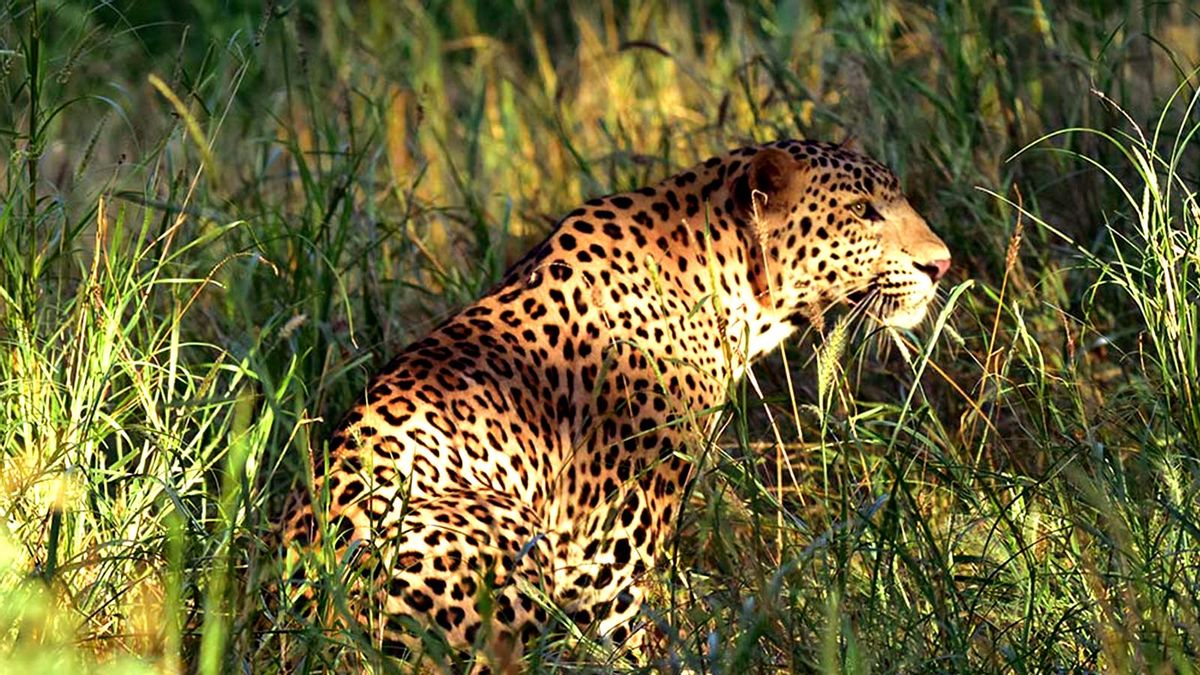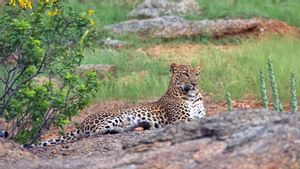The pick-up from our hotel was scheduled for 5.40 am on a December morning and the temperature in Jaipur was frigid at 16 degrees celsius. The winter sky donned a deep shade of blue bearing absolutely no hint of the soon to appear rays of light. It was our last day in Jaipur and the excitement of an opportunity to spend the morning in a forest located right in the middle of the city had helped us to wake up early. The bonus? A chance to spot the forest’s most popular inhabitants - the leopards.
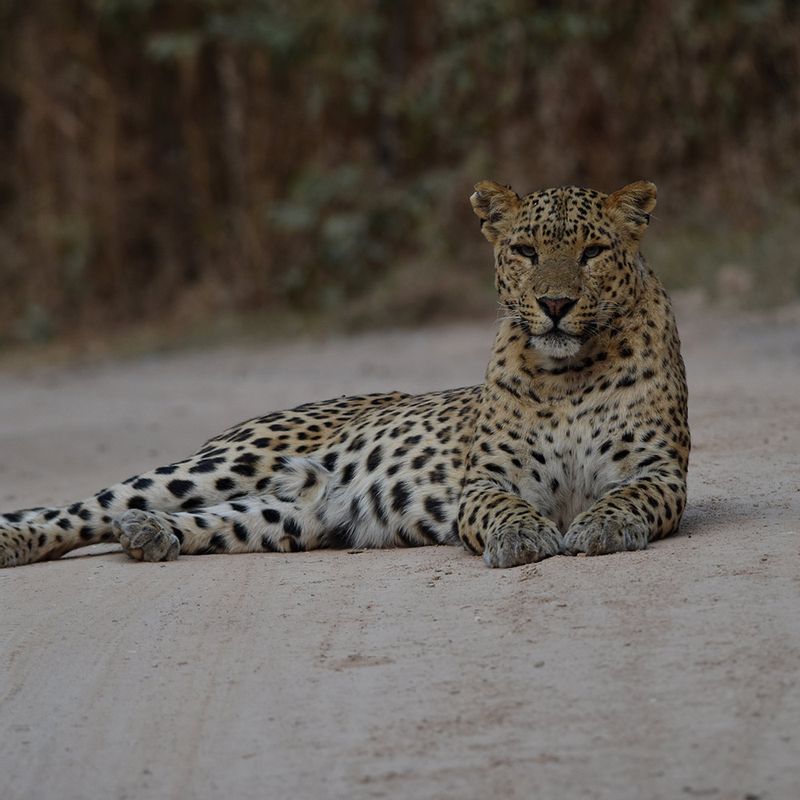
Our pick-up vehicle was an open, electric jeep. “These EVs by Mahindra are very silent and work best for the forest. If the tourists are quiet, this allows sightings without disturbing the animals too much,” our driver and guide Shobhit, said proudly. We were at the gate of the Jhalana Leopard Safari Park in about 20 minutes. Our enthusiasm had ensured that we arrived quite early so it gave us time to browse through a gallery that displayed stunning photographs of the leopards shot by talented wildlife photographers. The gallery also had framed headshots and details of some of the leopards who currently reside in the park.
Situated right in the heart of Jaipur city, not too far from the Airport, Jhalana was a hunting ground for the royals and many years later, the road was made accessible to private vehicles at a cost of Rs 300 per car. It was initially popular as a birding destination and was frequented by many celebrated photographers. Although the number of vehicles allowed on this road was restricted, it still caused a lot of disruption to the animals and so the government discontinued this facility.
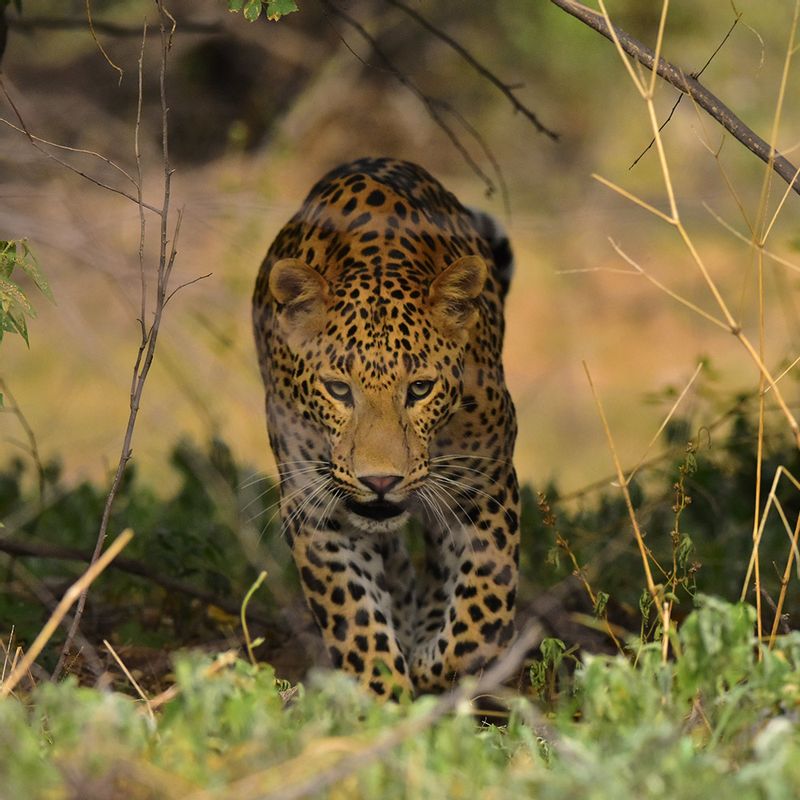
“The last tiger in Jhalana was shot in 1948,” says Rohit Gangwal, a wildlife conservationist who runs an eco-tourism venture in Rajasthan called World of Wilderz and conducts safaris in Jhalana. “Jhalana was opened for the first time for tourists in December 2016 and in 2017 it was formally identified as a Leopard Reserve by the Rajasthan Forest Department. There was an infestation of Prosopis Juliflora (Videshi Babool or Kikkar in Hindi), an invasive weed harmful to native biodiversity, which was cleared, and grasslands were developed. This is perfect for leopards and also provides fodder for other animals. Today, while the vehicles that go into the park are privately owned, they still run as per a government roster, just like in other forests like Ranthambore,” he elaborates.
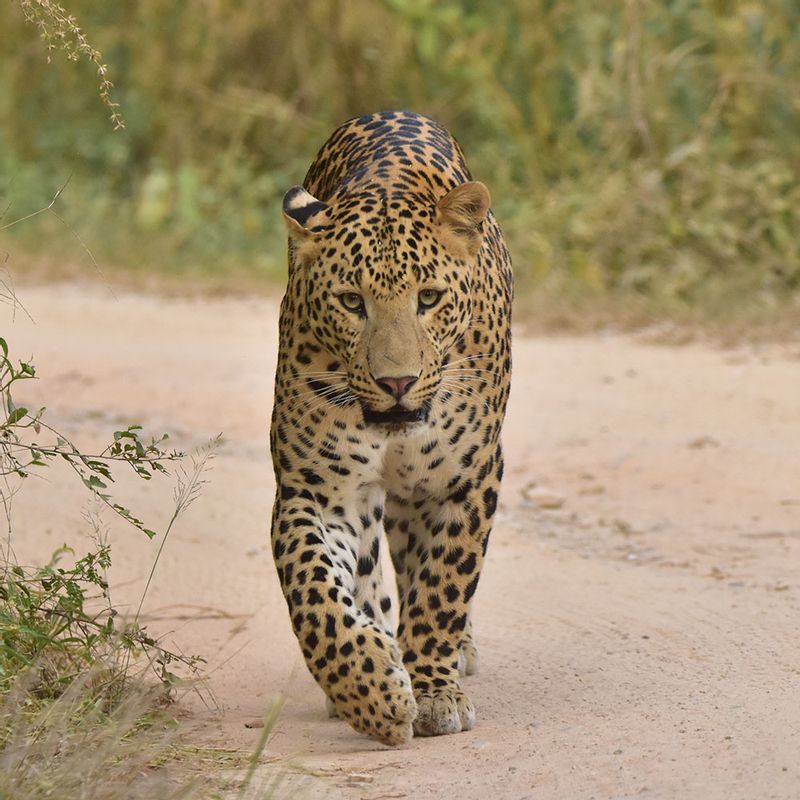
The park is spread in an area of 23 sq km, against the backdrop of the picturesque Aravalli hills, of which 40% area is currently open to visitors. There are two zones in this park, one is the base zone and the other is the ‘Shikar Audhi’ - a three-storeyed hunting lodge of the Royal families of Jaipur, and the safari permit allows you to visit both zones. Safaris are conducted in two batches - one in the morning and one in the evening – and only ten vehicles are allowed in the park at a time. The forest is home to 30-35 leopards, out of which 6-7 leopards have their territory in the area of the park that’s open for tourism.
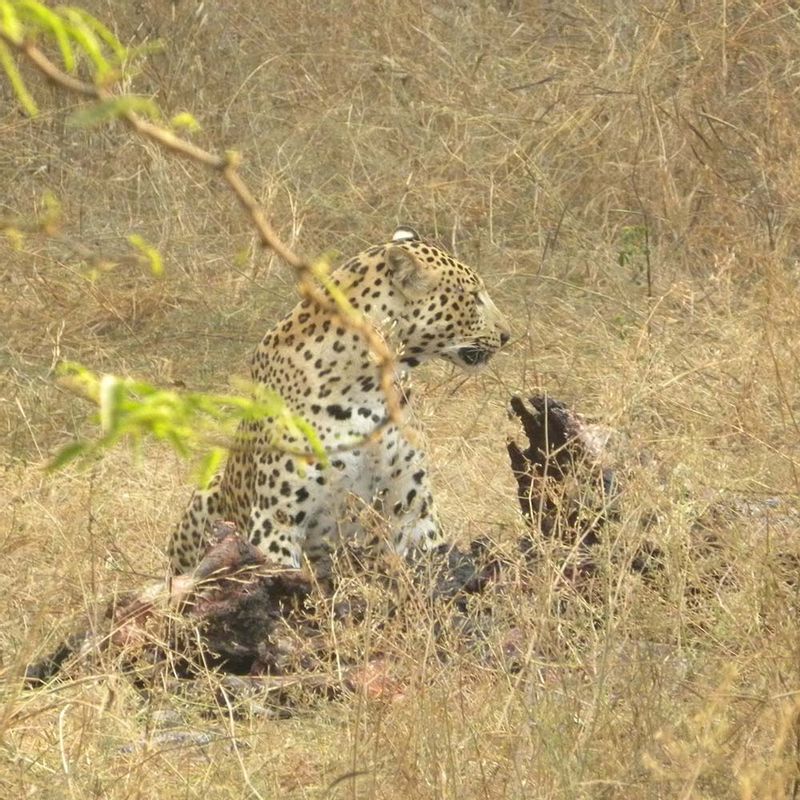
We were sharing our vehicle with four others as per park rules which allows 6 people in each jeep. We drove into the park as the first rays of the sun fell on the curving branches of the trees. A lone Nilgai indulged in breakfast and barely looked up to check us out. Spotted deer, langurs, and wild boars seemed very much at ease, which made us doubt that a predator was around. “A few days ago, a male leopard had made a kill in this area. He had killed a large nilgai, so he must be around somewhere around. We’ll scan that area first, before there’s too much light, as that is the best time to spot a leopard,” Shobhit explained.
After driving around slowly for about 20 minutes and soaking in the smell and sounds of the forest, we saw a jeep speed away. While passing us, he signalled for us to follow him. When we got to the place where the other jeeps were parked, we were told that they had seen a leopard walk into the tall grass of the dry, deciduous forest. We had just missed him.
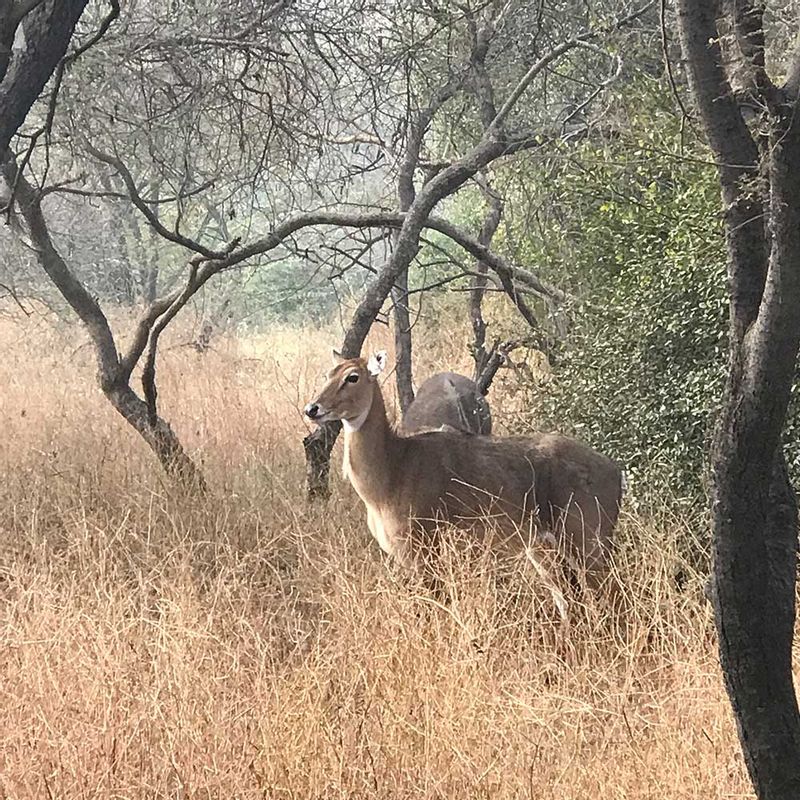
Our driver made a quick calculation of where the road might lead to and where the leopard may be seen again and made his way there. We parked the jeep near where the kill lay and turned the engine off, and sure enough, in a few minutes, despite his perfect camouflage - we spotted him. “His name is Rana and he’s a sub-adult male,” Shobhit whispered. While being surrounded by telephoto lenses and shutterbugs Rana finished his meal. A complete photographer’s delight, he gave everyone ample opportunity to get their perfect shots. He walked to the nearest water body and then changed his mind, as the chattering in the gathered crowd got louder. He made his way uphill into the more dense part of the forest. “There is a Nala on the other side. The leopard feels safe because he knows that even when he’s walking on the road, he can always escape to that side where jeeps can’t go,” says Gangwal.
“There are multiple reasons why it is easier to spot leopards in Jhalana as opposed to other forests,” Gangwal tells us. “The otherwise shy cat is the apex predator here and does not have much competition for survival, which makes them confident. There is also no big prey here so even when the leopard makes a kill of a peacock or deer or a wild boar, he needs to come out and hunt more often. You’ll notice across forests in India, that sub-adult male, female tigers, and cubs are the ones spotted more often. Adult male tigers become reclusive, The space in the park is less, hence male leopards need to repeatedly come out to mark their territory. Some of these leopards have seen humans since their birth and that makes them slightly bolder,” he adds.
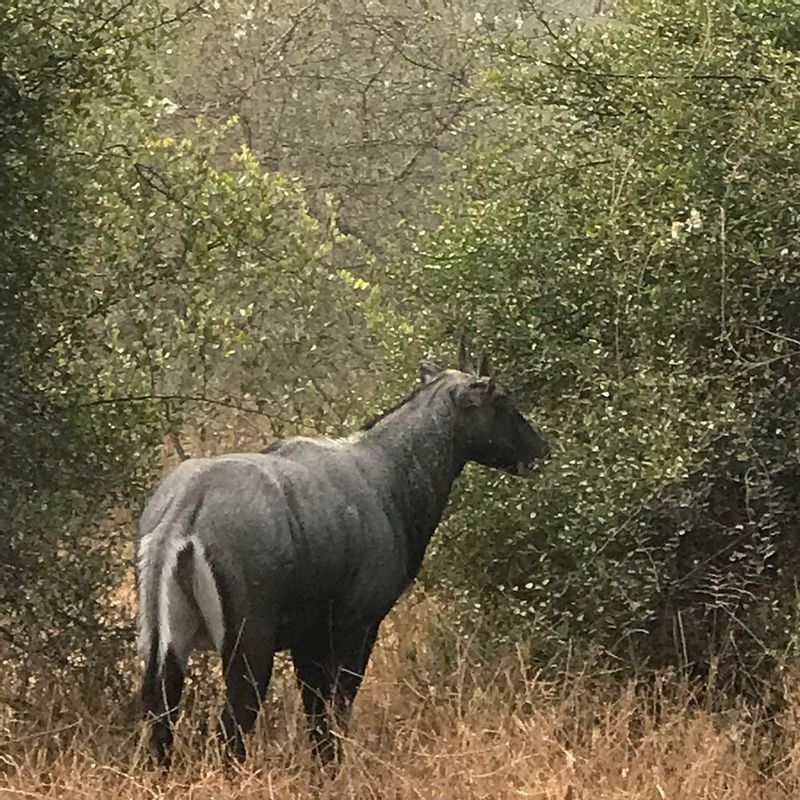
The next time you are in Jaipur, make sure you keep some time aside for the forest!
How to get there:
The Jhalana Safari Park is situated in Malviya Nagar Industrial Area in Jaipur.
Nearest Airport: Jaipur International Airport is 8.1 km from the Park.
Nearest Railway Station: Jaipur Junction is the nearest railway station located at a distance of 13 km from the Park.
Cost: The Safari costs Rs 1,100 per person on weekends and Rs 800 per person on weekdays. Pick-ups and drops from the airport or your hotel, come at an additional cost.
When in Jaipur:
If you’re in Jaipur for a day and have done the safari at Jhalana in the morning, there are a bunch of things you can do in the city. The Hawa Mahal and the City Palace are the most popular places visited. While the ticket that allows you access to the museums and the palace grounds at the City Palace is priced at Rs 200, the ticket to visit the interiors of the royal residence is Rs 2500 per head. Make sure you stop at the Amer Fort. Amer, which is one of the rare city monuments that are open until 8.30 pm. While the fort has its own charm in the day, it is beautifully lit in the evenings and offers a very different ambiance. We were sad to learn that the fort’s Son et Lumiere (the sound and light show) has been discontinued. Amitabh Bachchan’s telling of the fort’s history was something we looked forward to on our visits. On the road to Amer, you’ll spot the Jal Mahal - a palace in the middle of the Man Sagar Lake. The palace was originally constructed in 1699; the building and the lake around it were later renovated and enlarged in the 18th century by Maharaja Jai Singh II. It is not open to visitors.
Meals:
Don’t miss the Kheema Bati - an innovative version of the traditional Rajasthani Dal Bati at Spice Court located at Civil Lines in the city. Right next to this restaurant, there’s a cute patisserie and cafe called Dzurt, run by Cordon Bleu-trained chef Tejasvi Chandela that serves delicious desserts and a variety of tea.
Stay:
Jaipur has a variety of accommodations available at different price points. Many of the city’s erstwhile havelis, palaces, and royal homes have been converted into heritage properties. These allow you to experience the State’s legendary hospitality at its best while offering you a glimpse into its glorious past. We recommend the Alsisar Haveli, the home of the Thakurs of Alsisar, that offers 45 tastefully crafted rooms and a regal ambiance. Located on Sansar Chandra Road, the hotel is close to most of the city’s primary attractions. Don’t miss the breakfast by the pool!


